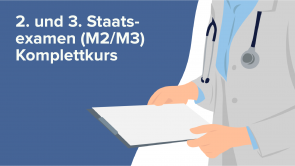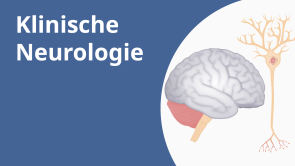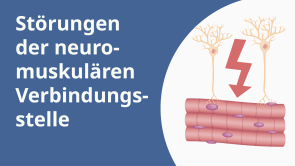Myasthenia gravis: Repetitive Stimulation – Diagnose

Über den Vortrag
Der Vortrag „Myasthenia gravis: Repetitive Stimulation – Diagnose“ von Roy Strowd, MD ist Bestandteil des Kurses „Störungen der neuromuskulären Verbindungsstelle“.
Quiz zum Vortrag
Which of the following statements is false?
- In patients with myasthenia gravis, there is a maximum decrement of no more than 10%.
- Primary acetylcholine stores are freely available but rapidly deplete within 1 minute.
- Mobilized stores of acetylcholine are released with continued maximal exertion.
- In healthy patients, tertiary stores of acetylcholine are rarely utilized.
- In healthy patients, we routinely see muscle contraction decrement with repetitive use.
Which of the following best describes the process of muscle excitation?
- Nerve impulse, opening of voltage-gated calcium channels, release of ACh into the synaptic cleft, stimulation of the AChR, muscle contraction
- Opening of presynaptic voltage gated calcium channels, action potential, release of ACh into the synaptic cleft, entry of ACh into the muscle cell
- Action potential, opening of presynaptic voltage-gated sodium channels, release of ACh into the synaptic cleft, stimulation of AChR, muscle contraction
- Nerve impulse, release of presynaptic calcium stores into the synaptic cleft, stimulation of muscle contraction
- Opening of presynaptic voltage gated sodium channels, release of ACh into the synaptic cleft, entry of calcium into the muscle cell
Which of the following best captures the pathophysiology of myasthenia gravis?
- Autoantibodies prevent the binding of ACh to their receptors.
- Autoantibodies prevent the activation of presynaptic calcium channels.
- Autoantibodies prevent the release of ACh into the synaptic cleft.
- Autoantibodies prevent the influx of calcium into the muscle cell.
- Autoantibodies prevent the propagation of an action potential down the axon.
Which of the following statements is NOT true about the difference between myasthenia gravis (MG) and healthy patients?
- Maximal exertion will repair the decremental response in patients with MG.
- With repetitive stimulation, MG patients begin to experience subthreshold transmission.
- With repetitive stimulation, more junctions are taxed leading to a decremental response in patients with MG.
- In healthy controls, if a decrement occurs, it should be able to be repaired in 10 seconds with forced maximal exertion.
- Under normal conditions, secondary stores are always available.
Diese Kurse könnten Sie interessieren
Kundenrezensionen
5,0 von 5 Sternen
| 5 Sterne |
|
5 |
| 4 Sterne |
|
0 |
| 3 Sterne |
|
0 |
| 2 Sterne |
|
0 |
| 1 Stern |
|
0 |






